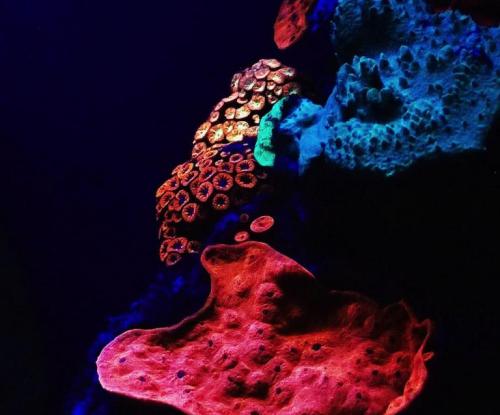Study Details Fluorescent Red Sea Corals
SOUTHAMPTON, England, June 26 (UPI) — A rainbow of colors can be found 150 feet below the surface of the Red Sea. The cacophony of color is thanks to a variety of fluorescent coral species, newly detailed by researchers in England and Israel.
At more than 150 feet under the ocean surface, only blue light penetrates. Scientists didn’t expect to find bright greens, reds and oranges, but here they were.
The glow-in-the-dark colors are the effect of fluorescent pigments in the corals’ cells — proteins that absorb blue light and reflect a plethora of brighter, longer wavelengths. Researchers at England’s University of Southampton, as well as Israel’s Tel Aviv University and the Interuniversity Institute for Marine Sciences, are hopeful these pigment proteins will advance medical imaging technologies.
“Their optical properties potentially make them important tools for biomedical imaging applications, as their fluorescent glow can be used to highlight living cells or cellular structures of interest under the microscope,” Jorg Wiedenmann, the head of Southampton’s Coral Reef Laboratory, explained in a press release. “They could also be applied to track cancer cells or as tools to screen for new drugs.”
The same proteins are also present in shallow water corals, but serve a sunscreen-like purpose for the corals and their algal cohabiters. There’s no need for protection from the sun in places where collecting enough light for photosynthesis is a daily struggle.
Quite the opposite of guarding against ultraviolet light, researchers found some of the proteins seem to require ultraviolet light to achieve their fluorescent potential.
“We found, however, that some of the pigments of these corals require violet light to switch from their nascent green colour to the red hue of the mature pigment,” said Southampton researcher Cecilia D’Angelo. “This is a particularly interesting property to develop markers for advanced microscopic imaging applications.”
Scientists say they need to conduct more research to understand what biological roles these pigments play.
Like Us on Facebook for more stories from GephardtDaily.com







